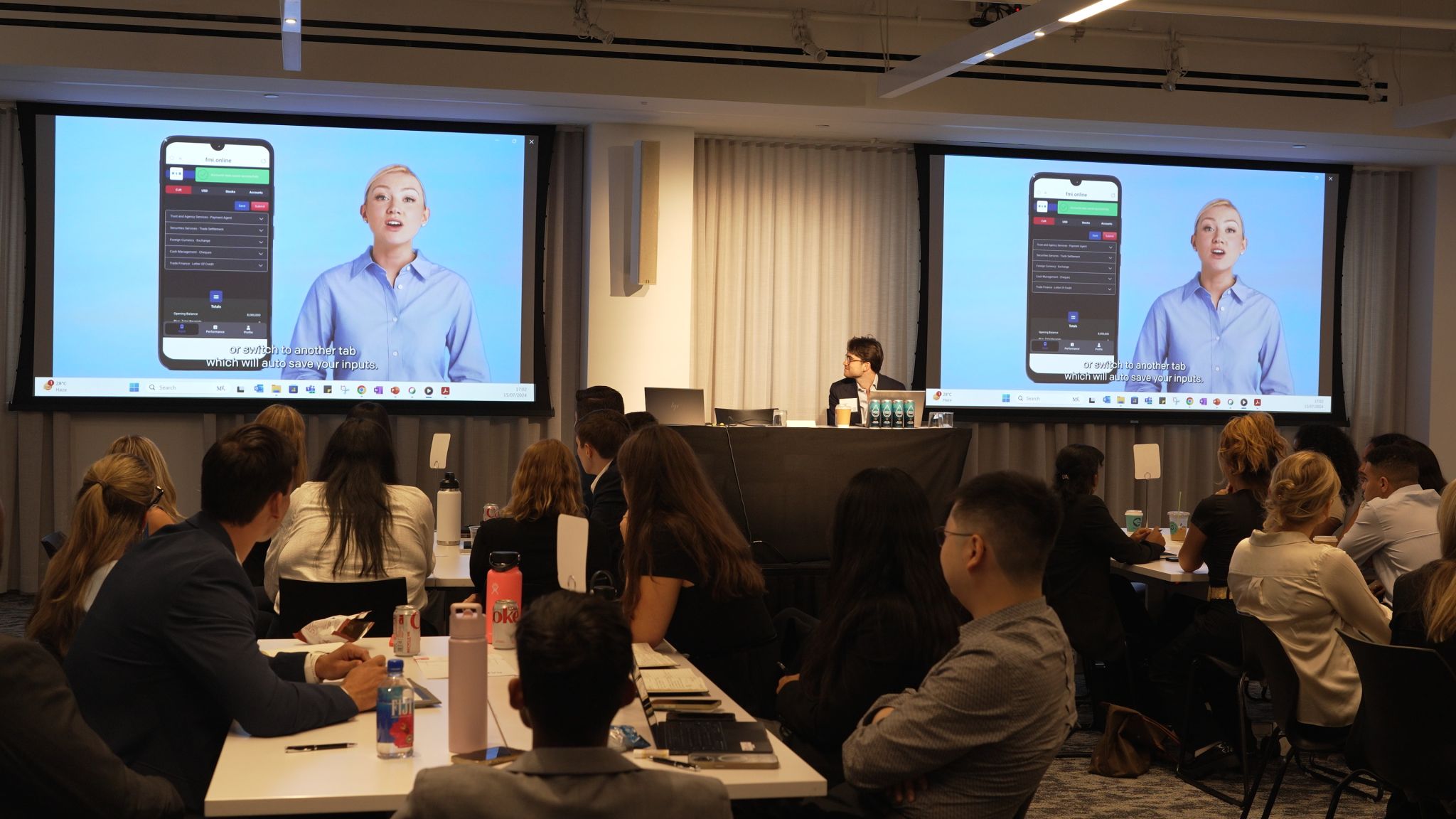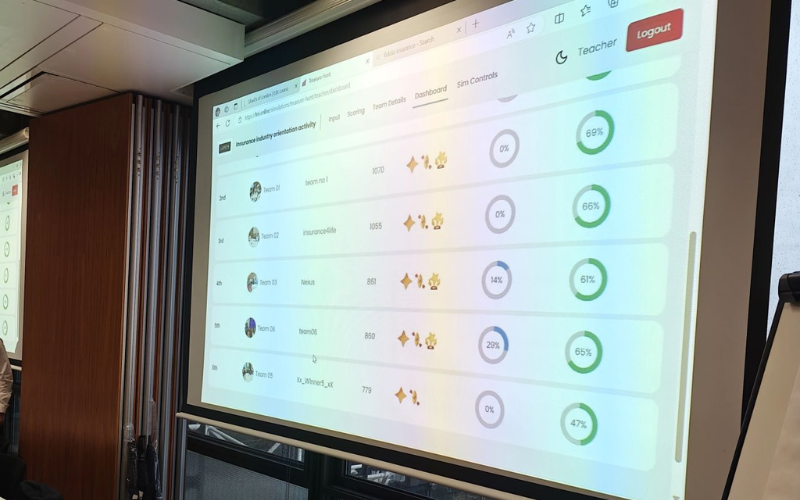Transforming Large-Scale Events into Unforgettable Learning Experiences
Corporate learning events have long been a staple for organisations seeking to inspire, engage, and educate their workforce. However, these events often fall short of delivering a truly memorable and impactful experience. The challenge lies in the traditional, passive formats that fail to engage participants meaningfully or provide a direct connection to real-world applications…
The evolution of experiential corporate training, particularly through business simulations, is addressing this gap. By transforming large-scale events into immersive learning experiences, organisations are discovering a way to not only captivate their audiences but also deliver long-term impact. This transformation is backed by research, bolstered by technology, and validated by the success of forward-thinking companies that are leading the charge…
The Proven Science of Experiential Learning
Experiential learning isn’t a new concept, but its growing relevance in corporate training is undeniable. David Kolb’s experiential learning theory underscores the value of active participation, reflection, and hands-on experimentation in the learning process.
The numbers speak volumes:
- Learning retention rates soar to 75% with experiential methods, compared to a mere 5% with lectures and 10% with reading (National Training Laboratories).
- Problem-solving and critical thinking improve by 50% when active learning techniques are used, as highlighted in a PNAS study.
- Experiential training methods increase on-the-job application of skills by 40%, according to McKinsey & Company’s 2023 report.
These findings challenge the traditional formats of corporate events, suggesting a need for more interactive and impactful approaches.
Reimagining Large-Scale Corporate Events
Forward-thinking organisations like Deloitte, Microsoft, and PwC are transforming their large-scale events by embedding experiential learning techniques. Their use of business simulations, gamification, and collaborative challenges has set a new benchmark for the industry.
1. Real-World Simulations: Immersive and Impactful
Simulations offer a safe yet realistic environment for participants to test their decision-making and strategic thinking under conditions that mirror the complexities of the real world.
- For instance, PwC integrated a high-stakes merger simulation into its 2022 leadership summit, engaging over 1,000 participants with dynamic scenarios and live data. This resulted in a 97% satisfaction rate and measurable improvements in strategic decision-making.
- The rise in demand for such experiences is evident, with the global business simulation market projected to hit £2.3 billion by 2027, growing annually by 12.4% (Allied Market Research).
2. Gamification: Adding Fun to Functionality
Gamification—using points, challenges, and rewards—has become an integral part of corporate events, ensuring high engagement levels.
- Gamified approaches are proven to boost engagement by 83% and enhance retention by 20% (TalentLMS, 2023).
- Microsoft leveraged gamified business simulations during its 2023 Global Sales Kickoff, achieving a 68% increase in engagement among participants.
3. Collaboration-Focused Learning
The emphasis on team-based activities in experiential training encourages collaboration and communication while solving real business challenges.
- Deloitte’s survey reveals that 79% of employees believe collaborative efforts lead to better outcomes, reinforcing the importance of teamwork in large-scale events.
- Unilever exemplified this with a sustainability-focused simulation, where teams collaborated on green business models. The result? Innovative solutions, with several later adopted into company strategy.
Technology as the Driving Force
Technology is making experiential training at large-scale events more accessible and impactful than ever before.
1. AI-Driven Personalisation
Artificial intelligence powers adaptive simulations that evolve based on participant choices, offering personalised feedback and deeper learning opportunities.
- Deloitte’s Virtual CFO simulation is a prime example, where real-time adaptability ensured a tailored experience for each participant. The use of AI in training has led to a 32% productivity boost, as per Gartner’s 2024 report.
2. Virtual and Augmented Reality
VR and AR technologies provide participants with immersive environments, offering unparalleled realism.
- Boeing used VR during a large-scale training event to simulate assembly processes, resulting in a 56% reduction in post-training errors.
3. Data Analytics for Continuous Improvement
Data analytics tools track participant performance and engagement, offering insights for refining future events. The ability to measure the ROI of training events through analytics is reshaping how organisations approach learning design.
Asking the Right Questions
The transformation of corporate events requires organisations to address crucial questions:
- Are training environments fostering experimentation and safe failure?
- How is ROI being measured beyond immediate satisfaction surveys?
- Is neuroscience being leveraged to optimise participant engagement?
- Are feedback loops being utilised effectively to refine learning outcomes?
Success Stories Leading the Way
Deloitte, Amazon, and Unilever provide compelling examples of how large-scale events can deliver both memorable and measurable outcomes.
- Deloitte’s Global Innovation Summit introduced simulations that left 93% of participants feeling better prepared for real-world challenges.
- Amazon’s gamified leadership training resulted in a 15% improvement in leadership performance metricswithin six months.
- Unilever’s sustainability-focused hackathon generated 10 actionable strategies, three of which are now integral to its global initiatives.
A Compelling Business Case
The financial and operational benefits of experiential learning are clear:
- Organisations prioritising experiential training see 4x productivity growth, as reported by LinkedIn Learning.
- Active learning methods lead to 76% higher employee engagement, and higher engagement drives 21% greater profitability, according to Gallup.
A Call for Change
Large-scale events have the potential to be much more than logistical spectacles. With the right tools and strategies, they can transform into high-impact, unforgettable learning experiences.
Simulations, gamified environments, and advanced technologies like AI and VR are at the heart of this transformation. The challenge for organisations is not in adopting these tools but in ensuring they’re used to their full potential. The question is no longer whether experiential learning is the future—it’s whether organisations are prepared to lead the way in making it the standard.
How MDA Training Can Help?
MDA Training specialises in transforming corporate events into immersive, high-impact learning experiences. Through cutting-edge business simulations, gamified learning, and experiential workshops, MDA delivers tailored solutions that engage participants, enhance skill development, and drive measurable results.
With over 25 years of expertise, MDA Training designs bespoke programmes for large-scale events, leveraging real-world scenarios, interactive technologies, and team-based challenges to ensure participants leave with actionable insights and improved performance. From onboarding and early careers training to leadership development, MDA’s innovative approach equips organisations with the tools to maximise engagement and ROI.
Ready to elevate your next corporate event? MDA Training is your partner in creating unforgettable learning experiences.









